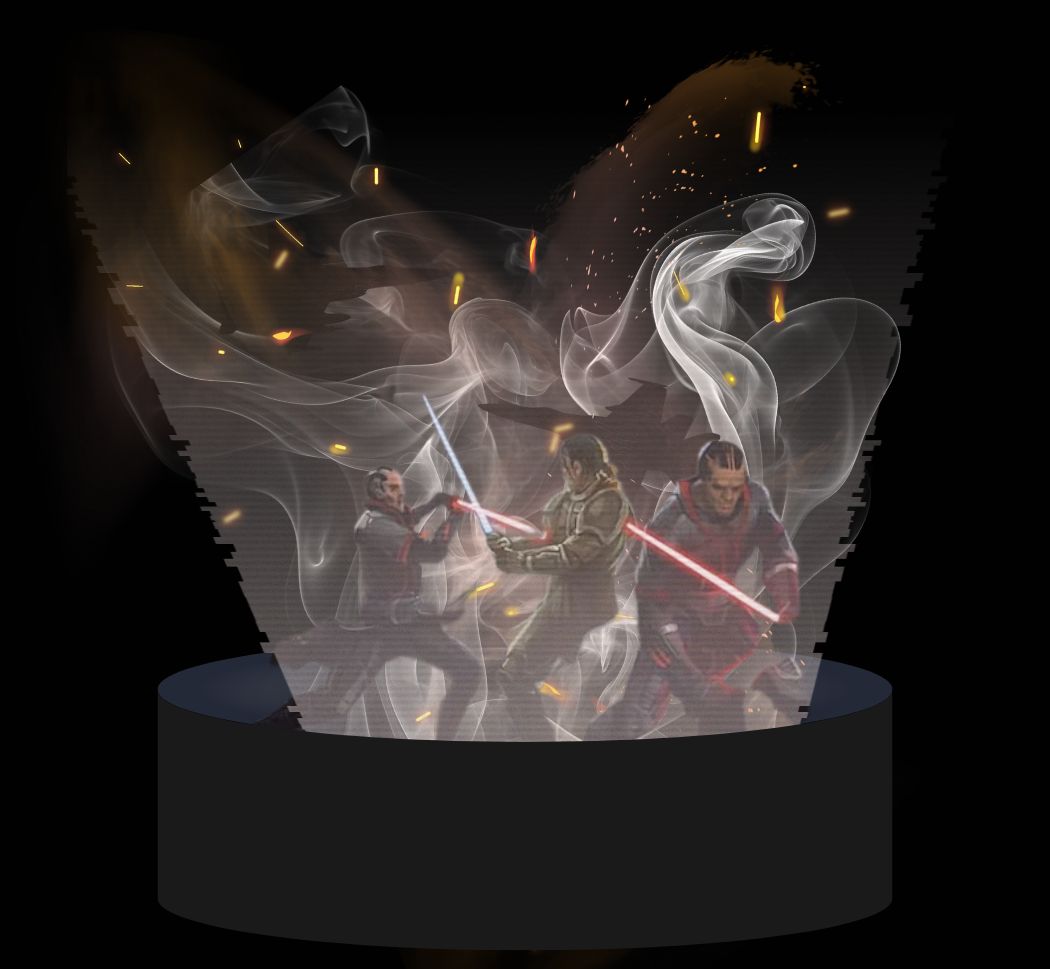The Jedi Symbol: Legacy, Light, and the Mark of the Order

The Jedi symbol, with its luminous blade and fanned wings, represents peace, balance, and the Order’s enduring mission. Rooted in ancient Force traditions from Tython to Coruscant, it evolved into the Order’s official crest during the Galactic Republic. The emblem appears prominently in Jedi temples, starfighters, holocrons, and modern media like The Clone Wars and The High Republic. After Order 66, the symbol became a hidden mark of resilience, later revived by survivors like Luke Skywalker and Ahsoka Tano. It remains a powerful cultural icon for both in-universe allies and real-world fans.
The Jedi Symbol: Legacy, Light, and the Mark of the Order
The Jedi symbol immediately conjures a powerful image of light and hope: wings extending outward, framing a central vertical blade of light—often interpreted as a stylized lightsaber or a shining star.

With its simple geometric shapes and a radiant central blade, this emblem encapsulates the ideals of the Jedi Order: peace, balance, and an unwavering connection to the light side.
Far more than a mere logo image, the Jedi symbol has adorned temples, holocrons, and starships from the age of the High Republic to the fall of the Galactic Republic and rise of the Galactic Empire.
Wielded as a badge of honor by Jedi Knights and masters alike, including legends such as Luke Skywalker, Cal Kestis, and even Ezra Bridger, the crest has come to represent the sacred duty of all Star Wars Jedi.
Whether etched into the walls of the Jedi Temple on Coruscant or emblazoned on armor in LEGO Star Wars games, the Jedi Order logo has endured not as a trademarked product but as a timeless symbol of hope, especially among the Rebel Alliance. In the sections below, we’ll examine how this ancient insignia evolved—its origin, meaning, and lasting role in the mythos of powerful Jedi from Obi-Wan Kenobi to the fallen Anakin Skywalker.
What Is the Jedi Symbol? A Closer Look at the Design
At its core, the Jedi symbol features stylized wings or sun rays that fan out symmetrically from a central vertical element reminiscent of a lightsaber or a radiant star.

This design evokes imagery of ascension, balance, and the illumination that comes from harmonizing the Force with personal will. The wings suggest protection and the spreading of peace across the galaxy, while the central blade represents truth, justice, and the direct link to the Force itself.
This emblem has appeared consistently throughout Star Wars media – from the Prequel Trilogy, where it is seen on Jedi temples and archives, to the animated Clone Wars series and the recent High Republic publications.
Its persistent presence solidifies its role as a symbol not only of martial prowess but of the Jedi’s spiritual and philosophical mission to unify reason and serenity amidst chaos.
Origins of the Jedi Crest: From Tython to Coruscant
The Jedi symbol’s roots likely trace back to the earliest Jedi enclaves on Tython, the legendary cradle of the Jedi Order around 25,000 BBY.
In both canon and Legends, Tython represents a place where the original Je'daii—precursors to the Jedi—learned to balance light and dark sides of the Force.
The emblem is widely believed to embody this balance, with symmetrical wings symbolizing harmony, and a central blade reflecting decisive will.
Moreover, the symbol might draw inspiration from ancient Force-worshipping cultures, such as the Tho Yor — massive, Force-sensitive starships that are foundational to Jedi mythology.
These ancient connections imbue the emblem with a deep ancestral lineage, linking modern Jedi to millennia-old traditions that emphasize enlightenment, balance, and duty to the galaxy.
The Jedi Order and Its Emblem in the Galactic Republic
With the Jedi Order’s formal integration into the Galactic Republic, the symbol became a standardized insignia representing the Jedi’s institutional role as guardians and peacekeepers.

It adorned temple banners fluttering across Coruscant, was emblazoned on the hulls of Jedi starfighters, and appeared on official Jedi documentation and uniforms, serving as a visible promise of the Order’s dedication to justice.
Through this widespread use, the emblem came to signify not just the Jedi’s sacred responsibilities but their political and diplomatic presence as stalwart protectors of the Republic.
It stood as a symbol of hope, peace, and stability—a reassuring mark that the galaxy’s defenders were vigilant, honorable, and committed to the light even amidst rising conflict.
The Jedi Symbol in Canon
In canonical Star Wars content, the Jedi symbol features prominently in key locations and materials that highlight the Order’s legacy.
It decorates the halls of the Jedi Temple on Coruscant, serves as an identifying motif on Jedi holocrons—repositories of knowledge—and graces the design of Jedi starships like the Delta-7 starfighters.

The symbol also appears in animated series such as The Clone Wars and Tales of the Jedi, contextualizing the Jedi’s spiritual authority and institutional steadfastness.
The Disney-era High Republic initiative introduces subtle updates to the emblem’s art style, infusing it with luminous golden hues and expanded rays to match the era’s themes of enlightenment and expansion.
These visual refreshes maintain continuity while signaling the Jedi’s ongoing evolution, further embedding the symbol as a timeless representation of the Order’s ideals and enterprise.
A Symbol of Light: Connection to the Jedi Code and Philosophy
The central blade or starburst within the emblem resonates deeply with core Jedi principles—standing for knowledge, discipline, and illuminating the path of truth. It evokes the notion that the Jedi wield their power defensively, not aggressively, embodying serenity and selflessness in their use of the Force.
Meanwhile, the surrounding wings symbolize the spread of wisdom and peace throughout the galaxy, echoing the Jedi’s role as guardians rather than conquerors.
This emblematic combination aligns perfectly with the Jedi Code, which stresses defense, knowledge, and harmony.
The symbol serves as a constant reminder that the true power of the Jedi lies not in domination, but in their commitment to protect life and foster understanding—values that permeate Jedi philosophy from training to leadership.
Contrast with Sith and Galactic Political Insignia
In stark contrast to the Jedi’s soft, winged and luminous symbol, Sith Order sigils are angular, aggressive, and predominantly crimson—evoking menace and conflict.
The Sith symbols emphasize sharpness, dominance, and a hierarchical order rooted in power struggles, standing in fundamental philosophical opposition to the Jedi’s ideals.
Similarly, political emblems such as the Galactic Republic’s seal favor circular harmony and democratic symbolism, while the Galactic Empire’s authoritarian logo stresses imposing order and control.
The Rebel Alliance’s phoenix emblem draws inspiration from the Jedi legacy—graceful, rising anew to restore liberty—thus bridging hope with renewal.
The Jedi crest’s neutral, dignified design fundamentally underlines its peaceful nature and clear distinction from militaristic or oppressive contraptions, reinforcing the Jedi’s role as protectors rather than aggressors.
The Jedi Symbol in the High Republic Era
The High Republic era presents a luminous reimagining of the Jedi symbol, accentuating themes of enlightenment, optimism, and active outreach to frontier regions.
In books and comics, the emblem frequently appears adorned with golden rays and sun motifs, reflecting a golden age when the Jedi are portrayed as benevolent guardians expanding their reach to safeguard peace and knowledge.
This evolution emphasizes the Jedi’s aspiration towards uplifting the galaxy, moving beyond mere defense to active leadership anchored in hope and expansion.
The High Republic’s portrayal highlights a more idealistic, shining form of the emblem consistent with a time when the Order flourishes and inspires hope on a grand scale.
The Symbol in Exile: The Jedi After Order 66
Following Order 66 and the purge of the Jedi, the symbol became a hidden relic of a fallen era—often taboo or cloaked in secrecy.
It appears in clandestine temples, rebel hideouts, and on recovered artifacts cherished by surviving Jedi and allies.
Figures such as Ahsoka Tano, Luke Skywalker, and Cal Kestis reconnect with the emblem during their quests to restore or reimagine Jedi teachings, underscoring the symbol’s role as a potent reminder of lost ideals.
During these dark times, the crest takes on a more somber tone, symbolizing resilience and resistance rather than open authority.
It serves as a beacon for those who continue the Jedi legacy in exile, representing hope amid oppression, and the quiet strength that sustains the spark of light awaiting rebirth.
Cultural Impact and Modern Use in the Galaxy
The Jedi symbol maintains a complex cultural footprint across the galaxy, revered by some as the ultimate mark of peace and wisdom, and feared by others who still associate it with the militia and old Republic power.
Museums, archives, and Jedi ruins prominently feature the emblem, preserving its history and inspiring new generations. It is also a rallying icon for various resistance movements and those striving to revive Jedi principles in times of turmoil.
Its inspirational power endures beyond galactic borders, serving as a symbol of hope, discipline, and resilience for new Jedi hopefuls post-Empire.
The emblem functions as a visual anchor connecting contemporary Jedi efforts to a storied past, embodying ideals that transcend time, politics, and war.
The Jedi Symbol in Fandom and Pop Culture
Among fans worldwide, the Jedi symbol enjoys immense popularity in cosplay, tattoos, apparel, and digital art, becoming a recognizable sigil of philosophical balance and protection. It is frequently adapted into minimalist or circular interpretations and often merges with ancient script designs for artistic flair.
These reinterpretations underscore the emblem’s versatility and profound symbolic meaning beyond the Star Wars universe.
As an icon, the symbol communicates an alignment with Jedi virtues and serves as a badge for communities committed to ideals of peace, justice, and spiritual harmony.
Its presence in pop culture cements the Jedi emblem as not just fictional imagery, but as a meaningful real-world symbol embraced by diverse groups seeking connection to the saga’s timeless messages.
Final Thoughts: Why the Jedi Symbol Endures
From the ancient halls of Tython to the rubble of Jedi Outcast temples scattered by the Galactic Empire, the Jedi symbol remains a powerful testament to the legacy of the Jedi Order.
Though not protected by trademark rights or subject to copyright status like other logos, the emblem carries cultural weight far beyond any public domain graphic or PD fonts file—it is the living banner of Jedi philosophy.
Even in exile, figures like Luke Skywalker and Cal Kestis reignited its meaning, proving that the Jedi logo was never just decorative text or targeted advertising for video games and merchandise. Instead, it is a beacon of light and peace, a visual anchor for every Star Wars Jedi Knight who continues the fight.
Whether engraved in stone or reimagined in fan art, the symbol persists not through copyright protection but through story contents passed down from George Lucas and generations of storytellers. In a galaxy fractured by war, the Jedi Order’s emblem remains—a simple, enduring mark that calls all guardians of the light back to their purpose.


















.jpg)
